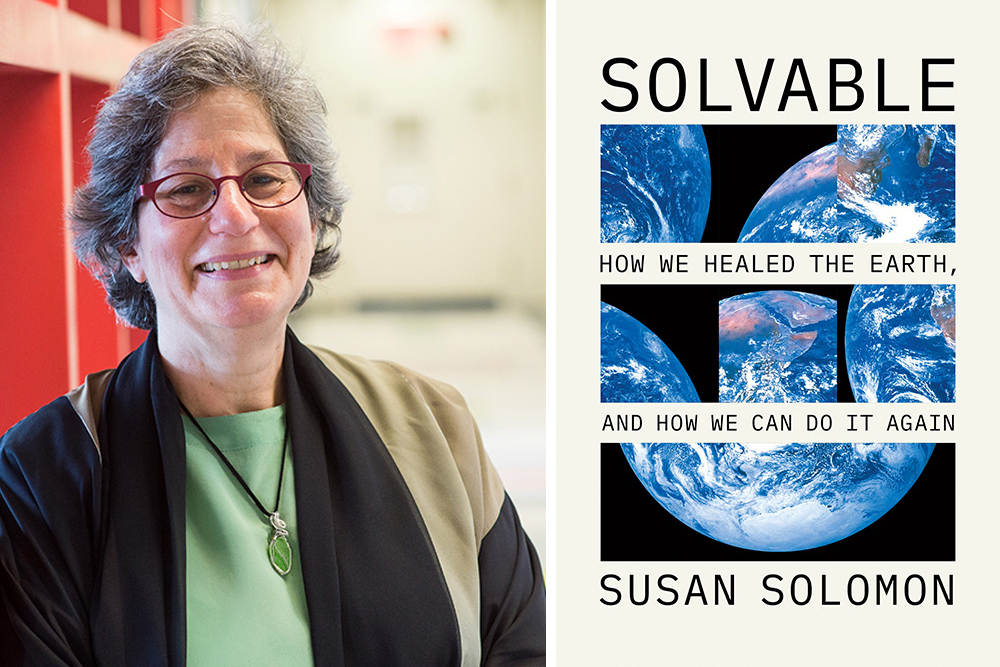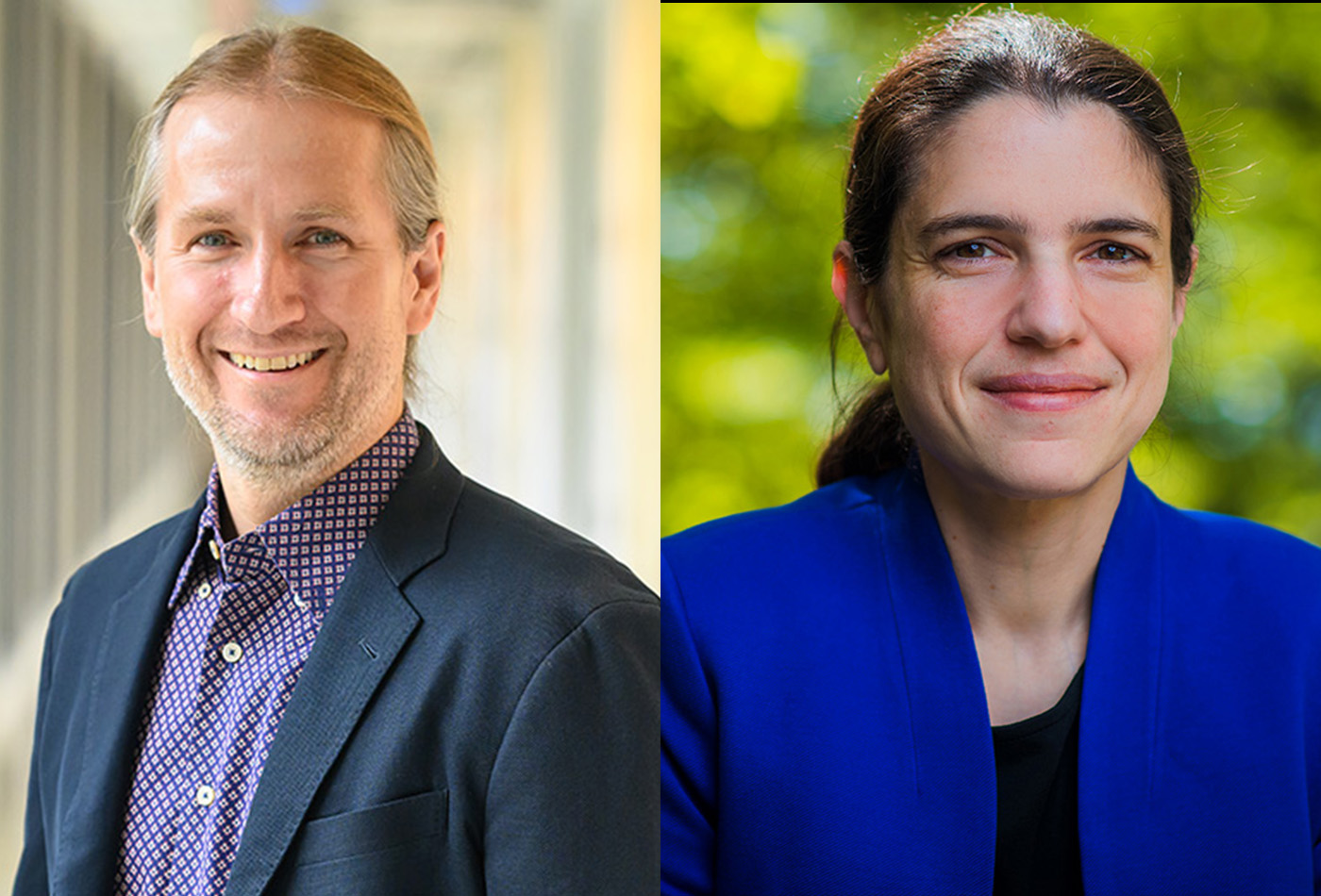An expansive approach to making new compounds
To create molecules with unique properties, Associate Professor Robert Gilliard and his team deploy strategies from both organic and inorganic chemistry.
While most chemistry labs focus on either organic (carbon-containing) or inorganic (metal-containing) molecules, Robert Gilliard’s lab takes a more expansive approach.
On any given day in his lab, researchers may be synthesizing new materials that can light up or change color in response to temperature changes, designing new molecules that activate chemical bonds, or finding new ways to make useful compounds out of carbon dioxide. Mixing different approaches and drawing from a variety of areas of expertise is the defining feature of his lab’s style of chemistry.
“At the core of our program, we are a chemical synthesis lab. We make molecules,” Gilliard says. “I have students that are in the organic division and students that are in the inorganic division, and we combine concepts from both worlds. We really can’t do our chemistry without both.”
Some of the molecules his lab creates require such specialized laboratory skills that very few other labs even try to make them. These compounds have a variety of unique optical and electrical properties that have drawn interest from companies that make LEDs and other optoelectronic devices.
Previously a professor at the University of Virginia, Gilliard joined the MIT faculty in 2023 as the Novartis Associate Professor of Chemistry, in part because of the opportunities to work with engineers to investigate device applications for those molecules, and to connect with companies interested in their lighting-generating properties.
“By bringing in components from different subareas of chemistry, we have generated some interesting optical and electronic properties in these compounds,” he says.
A winding path
After joining the faculty at UVA in 2017, Gilliard had no inkling that he would soon end up at MIT. His path to the Institute began soon after beginning his appointment, when he invited Christopher “Kit” Cummins, the Dreyfus Professor of Chemistry at MIT, to give a seminar at UVA. Cummins was very interested in the compounds Gilliard was working on and suggested that Gilliard come to MIT for six months as part of the MLK Visiting Professors and Scholars Program.
At the time, Gilliard was still getting settled as a new faculty member and didn’t want to leave his lab, but a few years later, when things were up and running, he joined the MLK program for the 2021-2022 school year. He worked closely with Cummins and others in MIT’s Department of Chemistry, and at the end of the year, department head Troy Van Voorhis broached the idea of bringing him to MIT as a permanent faculty member.
Gilliard, taken by surprise, had no intention of leaving his position at UVA, but he was intrigued by the opportunities for collaboration at MIT and in the Boston area in general.
“The MLK program was a great experience, a well-organized program that really exposed me to the whole MIT institution. I can say this, and I mean it: There’s no way I would’ve come here as a faculty member had I not done that MLK fellowship,” Gilliard says. “I was really enjoying my appointment at the University of Virginia and students that I had, and colleagues there. It would have been nearly impossible to get me to move if I hadn’t already spent that time at MIT and enjoyed the atmosphere and the people.”
Gilliard first became interested in chemistry as a high school student in Hartsville, South Carolina, thanks to an inspiring teacher, Charlotte Godwin, who taught his chemistry, physics, and physical science honors classes. He went to Clemson University planning to study premed, but he wasn’t enthusiastic about that choice.
“Before I arrived, I think I already knew I wasn’t going to do that because I don’t really like hospitals that much,” he recalls. “And so I changed my major before I even arrived, and I changed it to engineering.”
Clemson has a well-known engineering program, but after a couple of classes, Gilliard realized that wasn’t the best choice for him, either. He was, however, enjoying his chemistry classes, so he switched his major to chemistry and signed up to do undergraduate research.
He ended up working with a professor named Rhett Smith, who had just joined the Clemson faculty after doing a postdoc at MIT with Professor Stephen Lippard. In Smith’s lab, Gilliard worked on synthesizing catalysts as well as molecules that could be used as sensors, including sensors for cyanide and TNT, an explosive.
“That was just an amazing experience,” he says. “That’s when I knew that research was something that I enjoyed and that I would likely go on to graduate school.”
When he wasn’t working in Smith’s lab, Gilliard was still immersed in chemistry, working in the organic chemistry teaching labs. “I was doing so much chemistry, but I was having fun with it, so it didn’t really feel like work. It felt like something exciting to explore,” he says.
Novel compounds
As a graduate student at the University of Georgia, Gilliard focused on inorganic main-group chemistry but also took organic chemistry courses and was a teaching assistant for two organic chemistry classes. “I knew that I wanted to learn as much organic chemistry as possible because it would be beneficial for my career,” he says.
For his PhD research, he studied chemical bonds that can form between main-group elements — elements found at the edges of the periodic table, in columns 1-2 and 13-18. These types of bonds can be very difficult to achieve, but once made, they expand the possible bonding scenarios for non-transition metal elements, which makes them useful in a range of chemical reactions.
While doing a postdoctoral fellowship, which he divided between the Swiss Federal Institute of Technology (ETH Zürich) and Case Western Reserve University, Gilliard worked on combining small phosphorus-containing reagents into phosphorus heterocycles, which consist of multiple varied rings fused together.
At the University of Virginia, and now in his lab at MIT, Gilliard continued to study heterocycles, now focusing mainly on boron heterocycles. These molecules hold potential in numerous optical and electronic applications, in part because of their ability to efficiently donate or accept electrons from other molecules. Recently, in the Journal of the American Chemical Society, Gilliard’s lab published the first examples of boraphenalenyl radicals and diborepin biradicals that exhibit this important redox behavior. Such materials can also be used to make stimuli-responsive materials and chemical sensors, or to advance various light-emitting or absorbing technologies.
His lab also works on compounds containing bismuth and antimony that can be used to activate carbon-hydrogen bonds. Another area of focus is capturing carbon dioxide and converting it into useful chemicals.
The success of all of these projects, Gilliard says, depends on the “great team” working in his lab, including several students, postdocs, and research scientists who came with him from the University of Virginia.
“A lot of the compounds that we make are very, very difficult. They require specialized techniques and skills, so I’m grateful to have talented folks working in my lab,” he says.





